Other Parts Discussed in Thread: MSP-FET, UNIFLASH, TIDA-050026-23881, USB2ANY, TPS23731, PSEMCUDAUEVM-082, , TPS23881EVM-083, MSP430F5234
同時在量測HANDSHAKE波形時,關於檢測點的部分有10個點位,但照常理應該在PSE分級前,檢測點的部分應該只有四個才對,想詢問是否有哪邊的理解有誤?
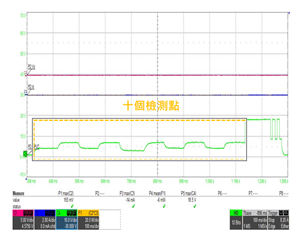
This thread has been locked.
If you have a related question, please click the "Ask a related question" button in the top right corner. The newly created question will be automatically linked to this question.
同時在量測HANDSHAKE波形時,關於檢測點的部分有10個點位,但照常理應該在PSE分級前,檢測點的部分應該只有四個才對,想詢問是否有哪邊的理解有誤?

Hi Pojui,
Thanks for reaching out.
PSE expert is on holiday vacation. Please expert a delayed replay and sorry for the inconvenience.
Best regards,
Diang
Hi Pojui,
This is abnormal behavior, however we still see the port power on.
Is there any fault conditiono on the port being reported? If so, what fault is being reported?
Regards,
Brandon
I can't success connect the PSE to GUI interface,so I can't see any feedback from my port.
Hi Pojui,
Without acccess to the GUI interface this could become difficult to debug. Do you have access to a USB-TO-ANY? This can be leveraged to read into the fault reporting on the board.
Regards,
Brandon
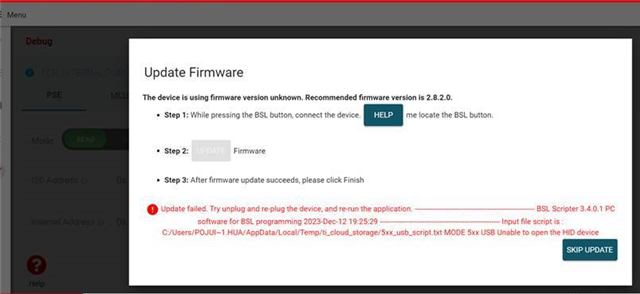
I want to connect the GUI,but I can't success because of this.I want to know how to solve it.
Hi Pojui,
It seems the MSP430 on the daughter card does not have the correct BSL image in order for you to use USB-TO-ANY option. You will need to update the BSL FW using MSP-FET and provided BSL before accessing using the GUI. Instructions for updating BSL can be found in the User's Guide here.
I would recommend flashing APP Code + BSL image that is provided in the mysecure folder using Uniflash.
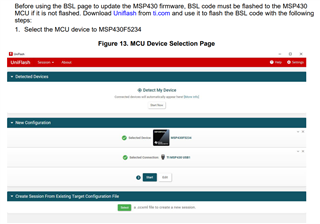
Regards,
Brandon
The current encountered issues are as follows:
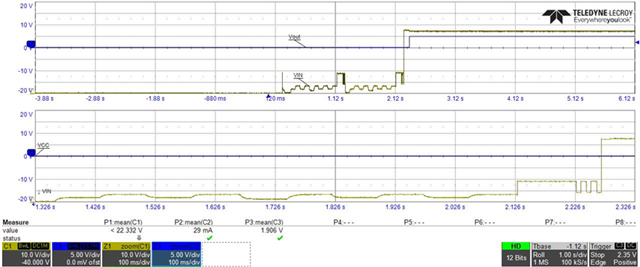
Regarding the Ti E2E response, it was mentioned that the waveform is abnormal, and it is recommended to connect the PC to the GUI to observe port behavior. Actions have been taken based on the suggestions provided in the TIDA-050026-23881 document from TI.
(1) Already have
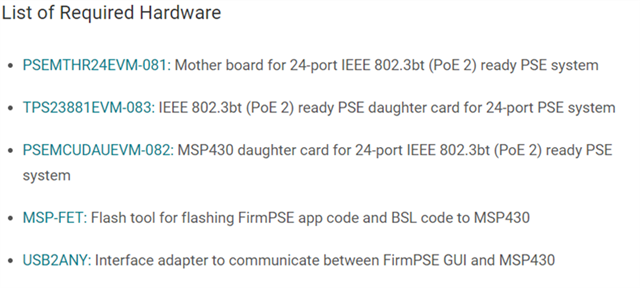
(2) Already download
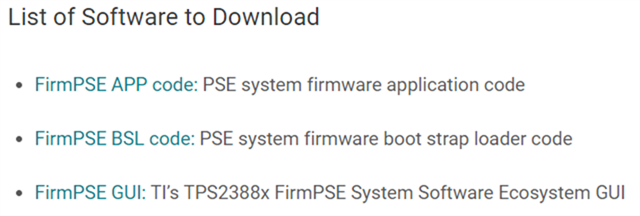
The attempt to successfully connect to the PSE GUI and PC has failed. The attached image depicts the actual connection, and an error message is displayed in the PSE System Firmware.
Various methods have been tried, but none have effectively resolved the issue, and skipping the update is not possible.
(1) is connecting the computer to USB2ANY, following the troubleshooting indications in (2), still does not lead to the interface of the PSE System Firmware.
(4) is attempting to connect the computer to MSP430 also results in an inability to establish a connection to the PSE System Firmware interface.
(1)PSE System Firmware Error Issue
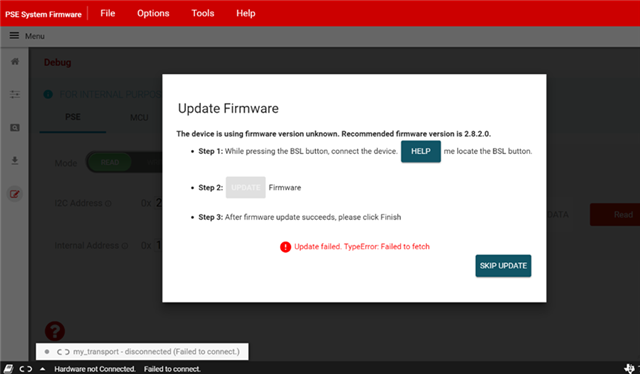
(2)PSL System Firmware on Website still can not connect
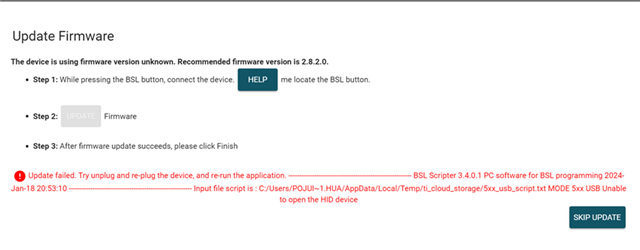
(3)This step already be down
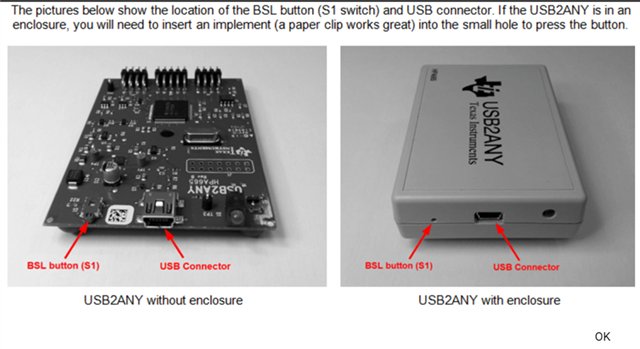
(4)
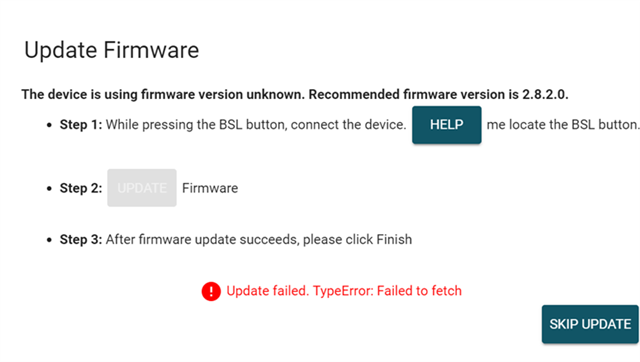
Below is the question, I have already asked on E2E, thank you.
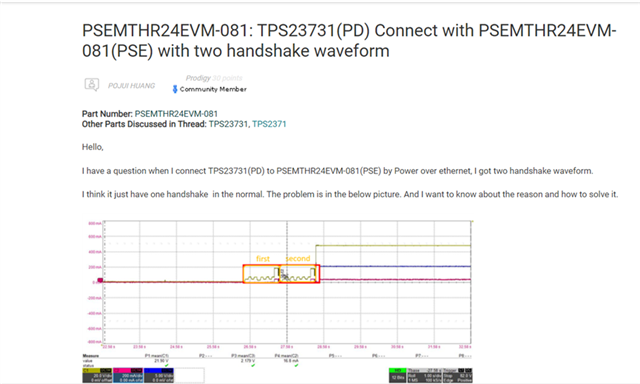
The content in the following Fig1 should represent a single set of handshake waveforms(yellow color), each containing eight detection points. Image two is expected to illustrate the reason for the behavior. Because the TPS23731 (PD Board) supports IEEE 802.3bt and is capable of providing power over 4 pairs, the observed waveform behavior is the result of combining Alt A and Alt B.
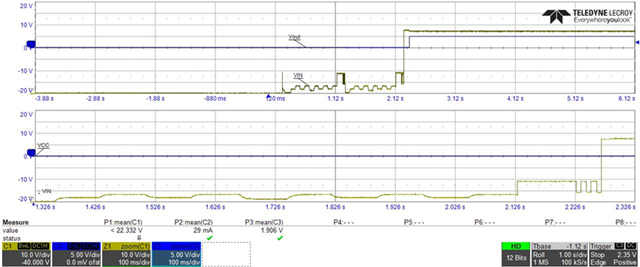
Fig1.
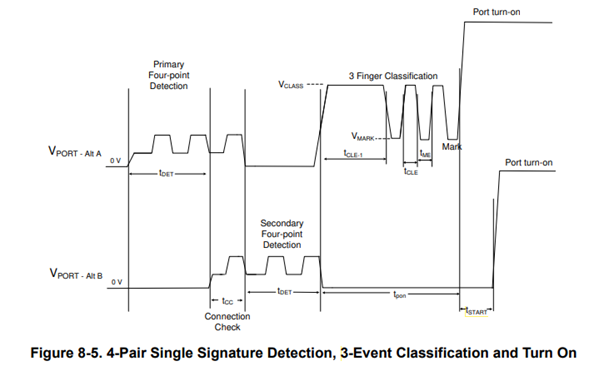
Fig2.
However, for the two sets of handshake waveforms, it is still necessary to access the GUI interface to observe the port status. We kindly request your company to provide specific recommendations and precise solutions for this matter.
Hi Pojui,
I am attaching the FirmPSE 24-Port Design User's Guide as this should document all the steps necessary for updating FW, including BSL upload here.
Furthermore, which I had stated above, the USB-TO-ANY adapter is not working because the BSL image on the device is not up to date. In order to update the BSL, you need to use MSP-FET to program the flash. The steps are as follows.
Step 1: Connect TPS23881EVM-083 and PSEMCUDAUEVM-082 to the PSEMTHR24EVM-081.
Step 2: Once the full board is connected. Power the motherboard using Power supply 1 at J1 (optional when using MSP-FET)
Step 3: Connect MSP-FET to J1 on PSEMCUDAU-082 card.
Step 4: Go to TI.com->Your Account-> Secure Resources->FirmPSE Folder and download BSL image as well as APP code image + BSL.
Step 5: Navigate to uniflash.
Step 6: Uniflash should auto detect the connected device. If not select MSP430F5234.
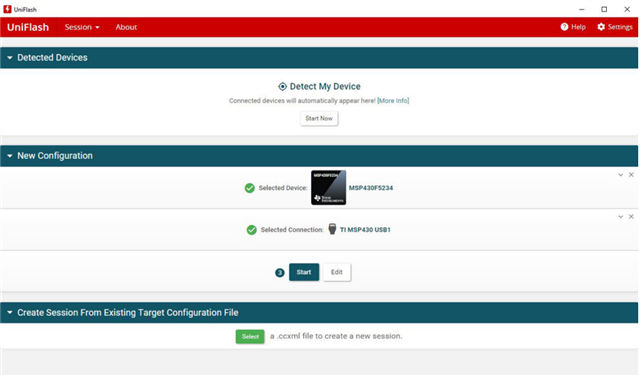
Step 7: Configure the settings for the flash by clicking settings and utilities:
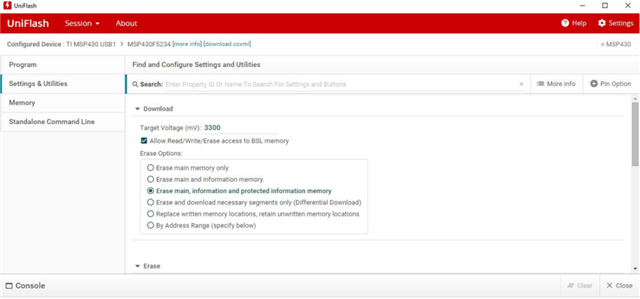
Step 8: Load APP Code + BSL:
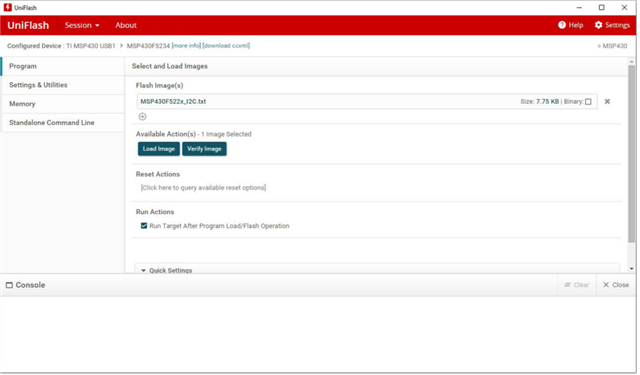
Step 9: You have now correctly programmed the flash image on the MSP430. You may disconnect the MSP-FET and power cycle the board.
Step 10: Ensuring the board ispowered ,connect USB-TO-ANY to J12 on PSEMCUDAUEVM-082.
Step 11: Navigate to FirmPSE Online GUI.
Step 12: Ensure jumper selections PSEMCUDAUEVM-082 are as follows: J10 connected, J15 and J16 set to bottom connection, J5 disconnect, J6 set to I2C, and J2 set to INT.
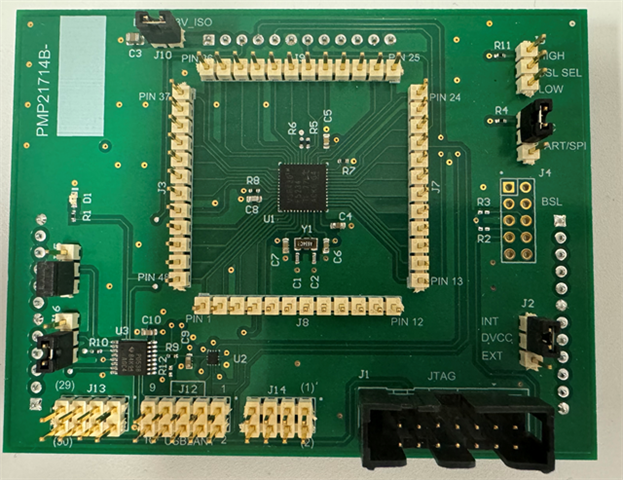
Step 13: You may need to update FW on USB-TO-ANY which can be followed through GUI tool. (If the FW will not update on the USB-TO-ANY correctly, please up E2E item with USB-TO-ANY team. I am not expert on USB-TO-ANY as this is not our device. The USB-TO-ANY team should be able to assist better here.)
Step 14: Select I2C interface and uncheck GPIO expander option.
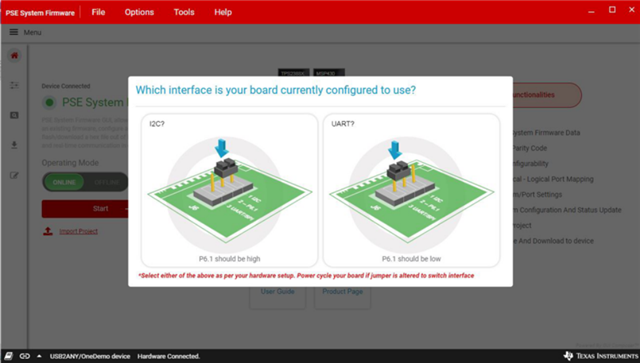
At this point, you should now be able to successfully interface between GUI and EVM.
In order to check port status, on the port you are seeing this weird behavior, go to system status tab and click on the respective port. In this view, you should be able to check port faults to see what is happening on the port.
Regards,
Brandon